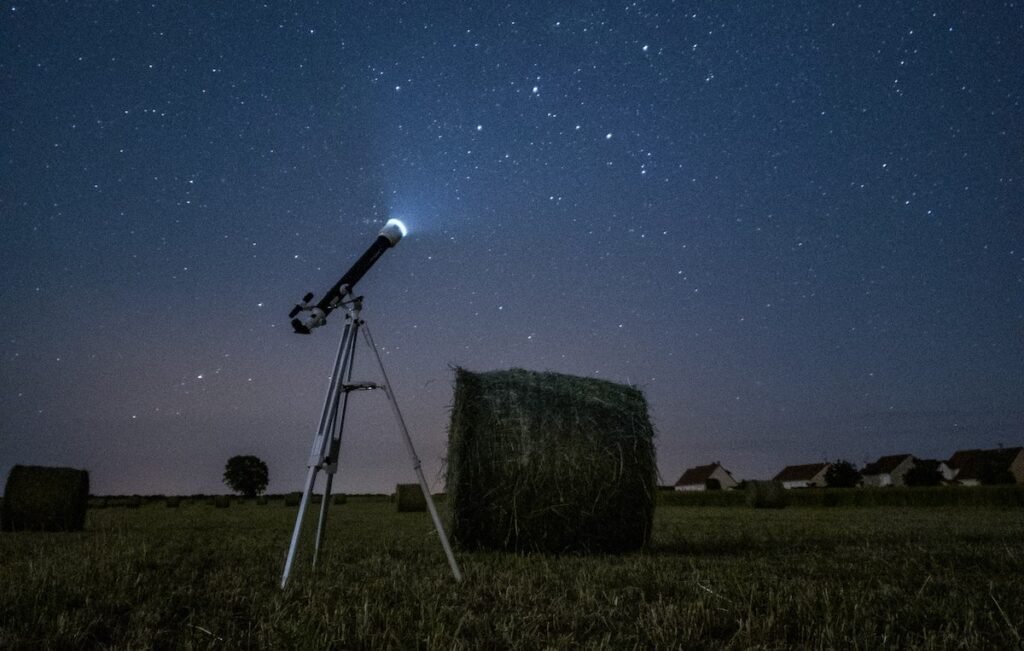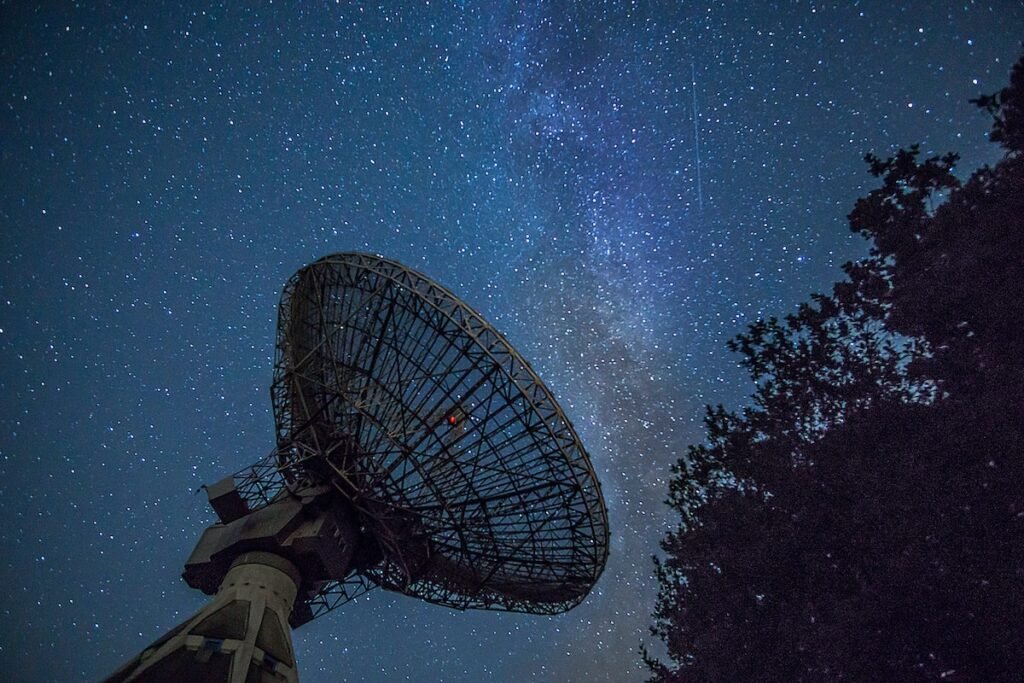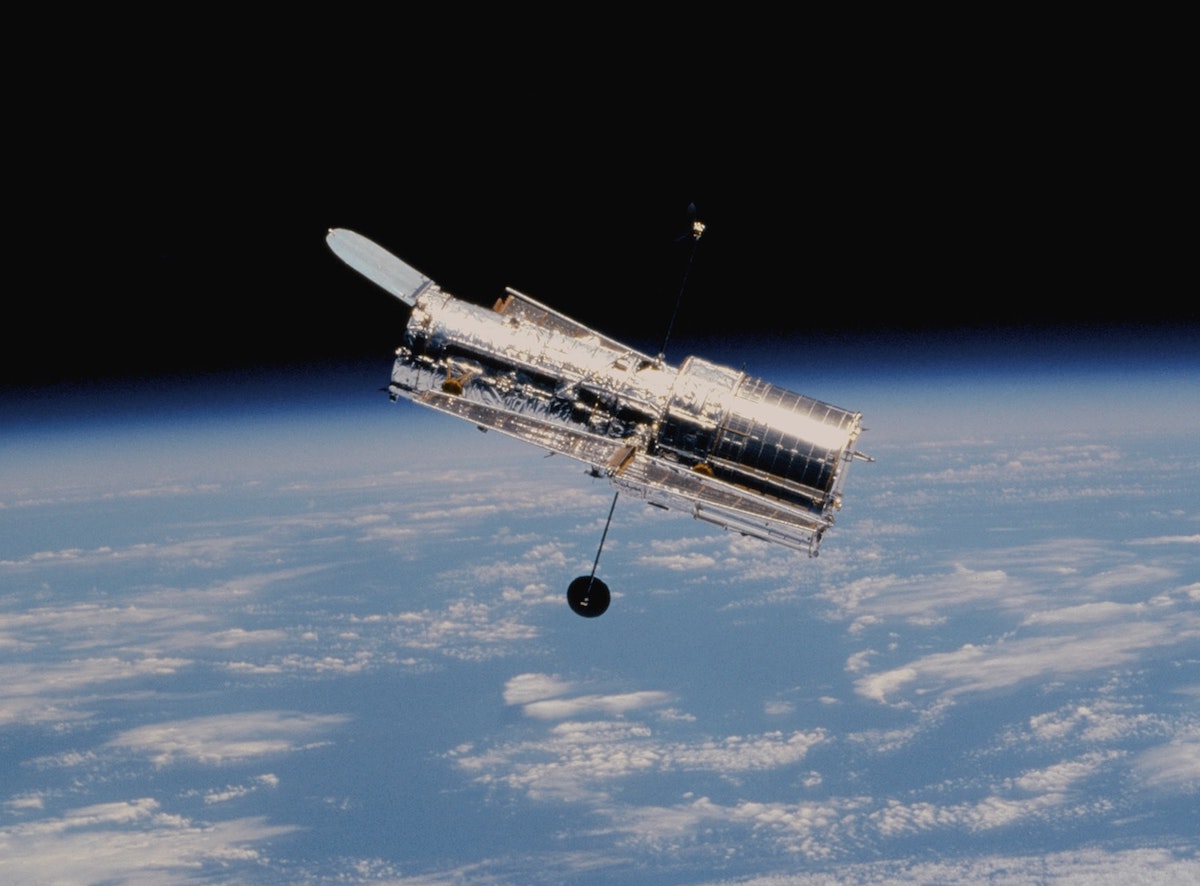A telescope is an instrument used to observe distant objects by collecting and focusing light from the sky. There are various types of telescopes including refracting telescopes, reflecting telescopes, and radio telescopes. They are widely used for astronomical observations, as well as for terrestrial viewing and other scientific purposes.
How does a telescope work
A telescope works by collecting and focusing light from distant objects, such as stars, galaxies, and planets. The light enters the telescope through an objective lens or a primary mirror, which captures and gathers the light. This light is then focused onto a smaller secondary lens or mirror, which in turn focuses the light onto an eyepiece or a detector. The eyepiece magnifies the focused light, allowing the observer to see a larger and clearer image of the distant object. The size of the objective lens or mirror, and the magnifying power of the eyepiece determine the overall magnification and resolution of the telescope.

What different types of telescopes are there?
There are several different types of telescopes, including:
- Refracting telescopes (also known as refractor telescopes) use a lens as the objective to bend light and form an image.
- Reflecting telescopes (also known as reflector telescopes) use a mirror as the objective to reflect light and form an image.
- Catadioptric telescopes are a combination of both refracting and reflecting telescopes and use both lenses and mirrors to form an image.
- Radio telescopes are used to observe radio waves emitted by celestial objects. Instead of an eyepiece, they use a radio antenna to receive and process the signal.
- Solar telescopes are specifically designed to observe the Sun and are often equipped with special filters to block out harmful light.
- Space telescopes are telescopes placed in orbit around the Earth, beyond the distorting effects of the Earth’s atmosphere, for clearer and more detailed observations.
Each type of telescope has its own strengths and weaknesses, and the choice of which type to use depends on the specific observing needs and scientific goals.
What is a refracting telescope
A refracting telescope, also known as a refractor, is a type of telescope that uses a lens as its objective to gather and focus light from distant objects. The light enters the telescope through a large, convex lens called the objective lens, which bends the light and brings it to a focus. The focused light then passes through a smaller lens called the eyepiece, which magnifies the image and makes it visible to the observer.
Refracting telescopes are known for their long, narrow tubes and are often used for terrestrial viewing and astronomical observations. They are also commonly used in binoculars and spotting scopes. Refracting telescopes have the advantage of producing sharp, clear images with minimal chromatic aberration, but they can be relatively heavy and expensive due to the large size of the objective lens.
What is a reflecting telescope
A reflecting telescope, also known as a reflector, is a type of telescope that uses a mirror as its objective to gather and focus light from distant objects. The light enters the telescope and is directed onto a concave primary mirror, which reflects the light to a smaller secondary mirror.
The secondary mirror then reflects the light through a hole in the primary mirror and into an eyepiece, which magnifies the image and makes it visible to the observer. Reflecting telescopes are known for their shorter, wider tubes and are widely used for astronomical observations.
They are also often more cost-effective and lighter in weight compared to refracting telescopes, as the mirrors can be made larger without adding significant weight or cost. However, they can be more susceptible to image degradation caused by atmospheric turbulence and may require more maintenance due to potential misalignment of the mirrors.
What is a radio telescope
A radio telescope is a type of telescope that is used to observe radio waves emitted by celestial objects, such as stars, galaxies, and black holes. Unlike optical telescopes that observe visible light, radio telescopes can detect radio emissions that are not visible to the human eye. Radio waves are collected by a dish-shaped antenna and then sent to a receiver, which amplifies and processes the signals.
The resulting data is then used to create images and analyse the characteristics of the radio-emitting celestial objects. Radio telescopes can be used to study a wide range of astronomical phenomena, including the formation of stars and galaxies, the behaviour of supermassive black holes, and the distribution of molecular gas in the universe. They can also be used for non-astronomical applications, such as radar imaging and communication.

What is the best type of telescope for beginners
The best type of telescope for beginners will depend on several factors, including budget, personal interests, and the intended use of the telescope (astronomical observation, terrestrial viewing, etc.). Here are a few options to consider:
- Refractor telescopes: These telescopes are often the most compact and easiest to use, making them a good choice for beginners. They also produce sharp, clear images and are relatively maintenance-free.
- Dobsonian telescopes: These reflecting telescopes are simple, large, and inexpensive, making them a great option for beginners who are looking for a budget-friendly option. They are often easier to set up and use compared to other types of telescopes.
- Go-To telescopes: These telescopes are equipped with computerised mountings that automatically point the telescope at specific celestial objects. They are often a good choice for beginners as they make it easier to locate and observe objects in the night sky.
Ultimately, the best type of telescope for a beginner will depend on their individual needs and preferences. It may be helpful to visit a local astronomy club or observatory to get hands-on experience with different types of telescopes before making a purchase.
What is a Dobsonian telescope?
A Dobsonian telescope is a type of reflecting telescope that is characterised by its simple and inexpensive design. It consists of a large, spherical mirror (the objective) mounted in a rotating base, and a small secondary mirror that reflects the light into an eyepiece. The objective is mounted in a way that allows it to move up and down and rotate left and right, allowing the observer to easily point the telescope at different objects in the sky. The base is mounted on a set of simple, low-friction bearings, making it easy to move the telescope around.
Dobsonian telescopes are often referred to as “light bucket” telescopes, as they can collect a large amount of light and produce bright, clear images of celestial objects. They are also relatively inexpensive compared to other types of telescopes and can be an excellent choice for beginners who are looking for a budget-friendly option. They are also easy to set up and use, making them a popular choice for amateur astronomers.
What is a go-to telescope
A go-to telescope is a type of telescope that is equipped with a computerised mounting system. The mounting system includes motors that can automatically point the telescope at specific celestial objects, making it easier for the observer to locate and track objects in the sky. The go-to system is controlled by a hand-held controller, which allows the observer to select objects from a database of thousands of celestial objects. The telescope will then automatically move to the correct position to observe the selected object.
Go-to telescopes are often favoured by astronomers who want to quickly and easily locate and observe objects in the night sky, and they are also popular among beginners who are just starting to explore the night sky. They can be more expensive than other types of telescopes, but they can also save time and make it easier to observe a wide range of celestial objects. However, it is important to note that a go-to telescope still requires some setup and maintenance, and the observer will need to learn how to properly align the system and navigate the night sky.
Can I use binoculars to stargazing?
Yes, you can use binoculars for stargazing. Binoculars are a convenient and portable tool that can be used to observe the night sky and view celestial objects such as stars, constellations, and even some deep-sky objects such as star clusters and nebulae. They are especially useful for observing the Moon and its craters, as well as the brighter planets such as Jupiter and Saturn.
Binoculars are also a good option for beginners who are just starting to explore the night sky, as they are less expensive and easier to use compared to a telescope. However, it is important to note that binoculars have a limited magnification and field of view compared to a telescope, and they may not be as suitable for observing faint or distant objects. Additionally, binoculars can be more difficult to hold steady for long periods of time, which can make it challenging to observe faint objects or to view details on the Moon or planets.

